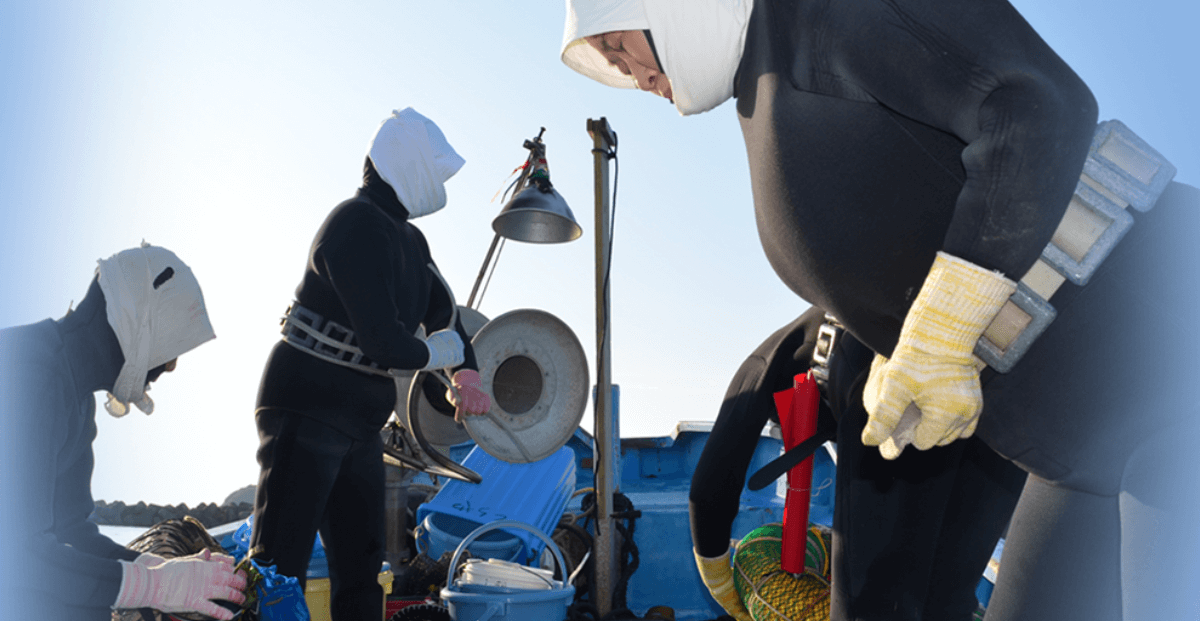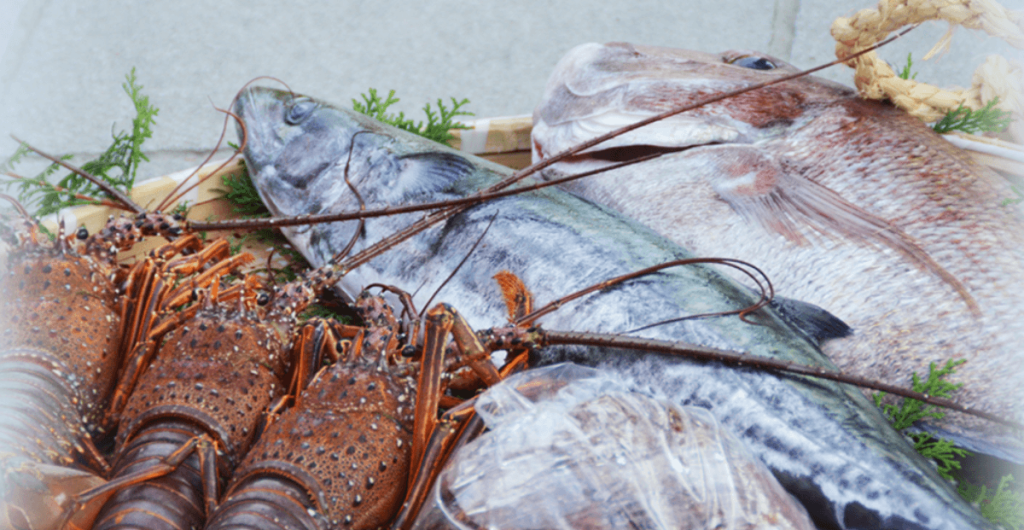
It is said that ama fishing has a history of 10,000 years, and the Osatsu area of Toba has the largest number of active ama in Japan, and ama fishing is still active today. The talismans of these women, who are freediving for fishing and are always in danger, are two symbols called “Seman Doman”. It is said that the term of this image is derived from Onmyoji, Abe no Seimei and Ashiya Doman, who were active in the Heian period. An onmyoji is a specialist in Onmyodo, a system of astronomy, divination, and sorcery of the time. Onmyodo, which is based on the five elements of Yin and Yang, is a thought that has developed uniquely in Japan under the influence of Chinese thought, which states that the movement of all things is brought about by the two forces of yin and yang. It is believed that Ama not only dived into the sea to catch fish but also played the role of transporting “life” from the eternal world (the world of shadows) to the floating world (the world of sunshine).
Also, at Shinmei Shrine in Osatsu, there is a stone with a height of about 50 cm called “Ishigami-sama”, which is revered as a guardian deity of divers. Known affectionately as “Ishigami-san” by the locals, it was originally a sacred place for ama divers who prayed for safe fishing.
Osatsu is also the place with the highest number of Ama divers per capita in all of Japan (about 100 Ama divers per thousand people in total). This district of Toba is also the place where you can dine at Ama huts, restaurants run by the Ama divers themselves, where you can eat delicious local seafood.
【序】鳥羽市相差町 海女漁~Garden of Gods Mie~







